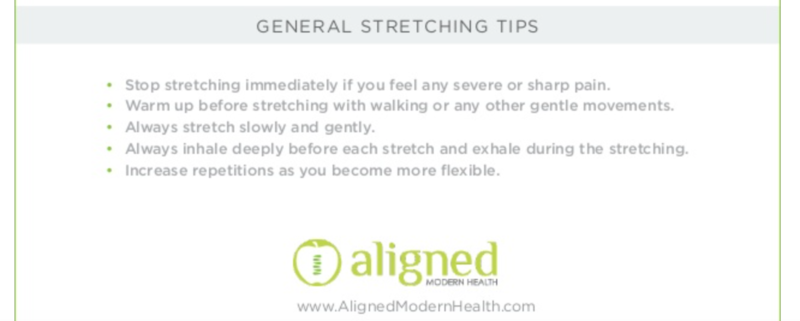Back Pain Exercise Guide

According to the American Chiropractic Association, back pain — especially lower back pain — is the leading cause of missed workdays and disability. In fact, about 80 percent of the U.S. population will experience back pain at some point during their lives. While men and women have similar rates of back pain, women tend to experience back pain from sprains and strains, sciatica, degenerative disc disease, arthritis and herniated discs. Other causes of back pain include spinal stenosis and piriformis syndrome. Thankfully, there are eight targeted exercises and stretches that can help control back pain naturally when performed on a daily basis.
1. Hamstring Stretches
When your hamstrings are tight, you may feel pain or tightness in the back of your legs, hips and/or lower back. Stretching your hamstrings involves laying on the floor on your back and raising one leg into the air without bending your knee. Then, you can use a towel looped around your foot to pull your leg toward you. This stretch should be performed three times on each leg and held for 30 seconds.

2. Wall Sits
Basic wall sits are great for strengthening your quadriceps (thigh muscles), adductors (inner thigh muscles) and hamstrings. As you increase the strength of your thigh muscles, you will help improve your overall mobility. To perform wall sits, stand with your back against the wall and slowly slide down the wall until you look like you are sitting in an invisible chair. Try to hold this position for at least 10 seconds — with the goal of eventually being able to hold the position for one minute. Perform this exercise between eight and 12 times.

3. Back Extensions
Back extensions are a great way to increase strength. Stretch your lower back muscles so that you experience less muscle fatigue in your back while standing, walking and performing your daily activities. An easy way to perform a back extension is to lay on your stomach with your hands directly under your shoulders. Next, engage your ab muscles by tightening them. Then, use your arms to slowly lift your upper body. At the top of the exercise, your body will look like an “L” that’s laying on its long side. Hold this position for 30 seconds before resting. Repeat this exercise several times for maximum effectiveness.

4. Bridging
Bridging helps strengthen the muscles in your lower back, buttocks, abs and hips. To correctly perform this exercise, lay flat on your back on the floor. Bend your knees and place your feet flat on the floor. Tighten your abs as if you are trying to pull your belly button toward your spine. Next, raise your buttocks and hips off the floor. Continue raising your hips and buttocks until your thighs and back form a diagonal line. Your shoulders should still be flat on the floor. Hold this position for six seconds before lowering your hips to the floor. Perform this exercise between eight and 12 times.

5. Pelvic Tilts
Pelvic tilts help strengthen your abs. To perform this exercise, lay flat on your back with your knees bent and your feet flat on the floor. If you just finished the bridging exercise, there’s no need to change your position. Tighten your abs until your back is flat against the floor. Rotate your hips slightly upward and hold this position for 10 seconds before relaxing. Perform eight to 10 pelvic tilts per session.

6. Bird Dog
Common in yoga and Pilates, the bird dog is used to strengthen the abs and lower back. To perform this exercise, move to the floor, positioning yourself on your hands and knees. Raise one arm and the opposite leg, holding them straight. Make sure you keep your back straight and hips level. Hold this position for five seconds before switching to the other arm and leg. Perform this exercise between eight and 10 times on each leg.

7. Piriformis Stretch
When the piriformis muscles are tight (located deep within the buttocks), they can cause sciatica-like symptoms. To stretch piriformis muscles, lay on your back with your knees bent. Take one leg and cross your ankle over the opposite knee, then pull your knee toward your chest. Once you feel the stretch, hold the position for 30 seconds. Repeat this exercise three times per leg.

8. Leg Raises
Leg raises help strengthen your lower back, glutes and legs. Start this exercise by laying on your stomach on the floor. Raise one of your legs off the floor about 2 inches, keeping your leg, buttocks and lower back muscles engaged. Once you achieve 2 inches off the floor, lower your leg. Repeat with the other leg. Try doing this exercise 20 times with each leg.

By performing these exercises on a daily basis, you will be increasing the strength of your lower back, abs, thighs and buttocks. As your muscle strength increases, you should find that your back pain has decreased and your endurance has improved. This will make performing your daily activities easier, and it will help you achieve an active, healthy lifestyle.


